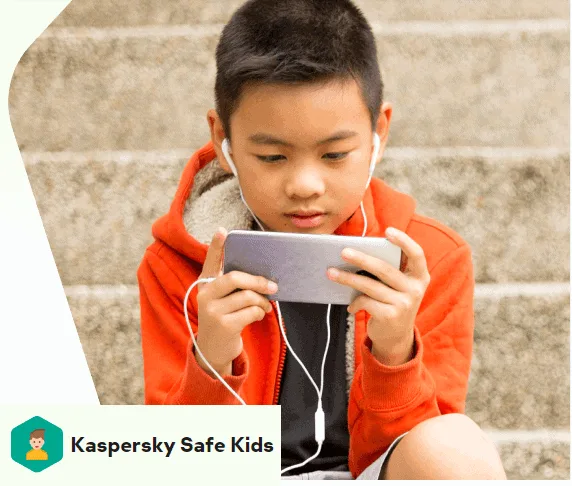- Qustodio vs MMGuardian Compared - December 12, 2022
- Mobicip vs Net Nanny - June 27, 2022
- Qustodio vs Kaspersky: Qustodio Will Always Be My #1 Choice - June 27, 2022
A 2021 study by Fortune Business Insights reveals that the parental control software market is forecasted to grow from $1,102.1 million in 2022 to $2,453.8 million in 2029. The rise in demand for digital safety for children is apparent, which also indicates that more and more tools are penetrating the market.
With that comes the responsibility for parents to make an informed decision on the best parental control software. Qustodio and Kaspersky Safe Kids are two of the most popular parental control platforms on the market. Both tools aim to safeguard children from the dangers of the internet while keeping parents in the loop of their online activity.
The tools have several features in common, such as website filtering, app blocking, time management, location tracking, and geofencing. But there are also some key differences.
This article aims to provide an in-depth comparison of Qustodio and Kaspersky. We’ll highlight the differences in features, pricing, and user experience to help you decide which platform is best for you.
Bottom Line Up Front
The main difference between Qustodio and Kaspersky is that Qustodio offers a more comprehensive feature set, whereas Kaspersky is more affordable and has better customer support. Both platforms have exciting product offerings, but I recommend Qustodio because it provides a better value for money.
Over 4 million parents trust Qustodio’s parental control tools to keep their kids’ screen time safe and balanced on every device—all from a single dashboard.
Main Differences Between Qustodio Vs Kaspersky
The main differences between Qustodio vs Kaspersky are:
- Qustodio is an independent product offering that doesn’t rely on a foster company, whereas Kaspersky Safe Kids relies on the infrastructure set forth by the larger Kaspersky company.
- Qustodio comes with a panic button that, when pressed, will send the exact location to a select group of contacts, whereas Kaspersky doesn’t have any sophisticated emergency protocols.
- Qustodio supports more devices, including Windows, iOS, macOS, Android, and Kindle, whereas Kaspersky only supports Windows, iOS, macOS, and Android devices.
- Parents can monitor an unlimited number of devices using Kaspersky at a standard price, whereas with Qustodio, the number of devices that parents can monitor is determined by the pricing plan parents choose.
Qustodio Overview

Qustodio brands itself as an all-in-one digital well-being solution for families. It’s one of the most popular parental control software providers, with over 4 million parents using the platform.
The platform stands out for its extensive features. Qustodio lets parents filter websites, block apps, set time limits, and track locations. It also monitors social media activity and allows parents to receive weekly or monthly reports on their child’s online behavior.
One of Qustodio’s exception features is the panic button that, when pressed, notifies a group of numbers with the child’s location. While calls and SMS monitoring are Android-only features, Qustodio’s website filtering and app blocking are available on all devices.
Qustodio is available for Windows, Mac, Chromebook, iPhone, Android, and Kindle devices. Parents can use it for free with limited features or a paid subscription with more comprehensive options. Pricing starts at $54.95/year, but most parents prefer the medium plan for $96.95/year as it provides the best value.
Qustodio Features
- Filter content and apps
- Monitor activity
- Locate family
- SMS and Call Tracking
- Reports, alerts, and SOS
- Set time limits
Qustodio Pros
- Extensive feature set
- Cross-platform support
- Excellent web filtering
- Free plan available
- Easy to use
Qustodio Cons
- Sometimes glitchy app
- Quite expensive
- Limits social network tracking to Facebook
Over 4 million parents trust Qustodio’s parental control tools to keep their kids’ screen time safe and balanced on every device—all from a single dashboard.
Kaspersky Safe Kids Overview

Kaspersky is a well-known Russian cybersecurity firm with roots dating to 1997. Kaspersky Safe Kids is one of the company’s products aimed at safeguarding children from the dangers of the internet.
Safe Kids comes with a range of features, such as GPS tracking, screen time controls, Website and App filters, and a YouTube safe search feature. The software is available for Windows, macOS, Android, and iOS. Installing the software is a seamless process, allowing you to configure the settings in minutes.
The Web interface is more simplified, but some people think it’s outdated. Safe Kids’ standout feature is the content filtering tool. It identifies up to 14 content categories and preconfigures restrictions based on your child’s age.
The software also blocks explicit content from search results on all popular browsers except (DuckDuckGo).
While it may not have as many outstanding features as other parental control software, it’s one of the cheapest. You can get Kaspersky Safe Kids for as low as $17.49/year for an unlimited number of devices. If you are up for the basics, the free version might suffice.
Kaspersky Safe Kids Features
- Online content filter
- Safe search on YouTube
- Screen time management
- GPS tracker
- YouTube search history
- Real-time alerts
Kaspersky Pros
- Cheaper than most parental control tools
- Excellent web filtering
- Parents can install it on an unlimited number of devices
- Comprehensive geofencing features
- Flexible schedule setting
Kaspersky Cons
- The interface is a bit basic and outdated
- Many limitations on iOS devices
Protect your kids online and offline with award-winning parental controls. Get flexible tools that help you safeguard their activities, monitor their behavior and teach them self-control.
Qustodio Vs Kaspersky: Feature Comparison

With a general overview of what the platforms offer, let’s now compare the features in detail.
1. Filtering
Qustodio and Kaspersky Safe Kids offer content filtering, but there are a few differences in how they approach it. Qustodio blocks all access to content that matches any undesirable category you preset. Some of the 11 categories include Alcohol, Drugs, Pornography, and Violence.
Other filters on social networking, file sharing, and messaging platforms are also available. Unfortunately, there’s no detailed description of the categories on the website, so you’ll have to take their word for it.
On the other hand, Safe Kids doesn’t block all content by default. However, it automatically preconfigures filters for different age groups based on 14 categories. These categories include adult content, weapons, and violence and have detailed descriptions.
Parents can preconfigure the software, so it forbids, warns, or allows the different content categories. Kaspersky Safe Kids blocks explicit content from search results on all popular browsers except DuckDuckGo. If the kid tries to access a restricted website, it immediately notifies the parent.
Winner: Qustodio edges out Safe Kids with its more comprehensive content filtering.
2. Device Monitoring and Time Management
Qustodio gives parents more authority over time control by allowing them to set time limits on device control. It enables parents to block or limit navigation when set time limits lapse.
Parents can also choose to block access entirely for a whole day or night. When parents lock navigation, the device hides all apps, but kids can still make outgoing emergency calls. Qustodio also offers time restrictions on specified apps.
Kaspersky’s Safe Kids doesn’t automatically impose time restrictions, but parents can set a schedule for screen time. It offers three options: Show Warning, which sends a notification to the child that time is up.
This setting doesn’t, however, block access or limit navigation. Block Access blocks the child from using the device for the allotted time. Statistics Only, a default setting, and Block Device, which completely disables the device.
If the child fails to heed the warning and exceeds the time limit, Kaspersky Safe Kids will notify the parent to take appropriate action. Parents can create schedules and limit access to certain apps using the Block Device option.
Winner: Qustodio-I found Qustodio a more comprehensive solution as it gives parents more authority over time control.
3. Location Tracking and Geofencing

Qustodio’s advanced geofencing capabilities under the My Places feature lets parents select a place on the map, give it a name, and create a boundary around it.
Something outstanding about the Qustodio location and geofencing features is the SOS feature. Through the SOS feature, kids can press panic buttons to send an emergency notification with their location to the parent’s device.
Kaspersky Safe Kids allows you to set up geofences on a map and receive real-time alerts when your child enters or leaves a particular area. The software goes a step further with its geofencing capabilities that allow parents to define specific areas, such as school or a friend’s house.
Parents will receive alerts when their child enters or leaves those areas. It’s also possible to set time limits for the child to remain within a certain area and send notifications when they exceed the limit or leave before time.
Winner: Tie-both Qustodio and Kaspersky Safe Kids offer location tracking with geofencing
4. Social Media Monitoring
Qustodio provides monitoring for most social media platforms. It doesn’t reveal the contents of the messages but shows the time and duration the kid used the social media platforms. These rules apply to Skype, Instagram, Snapchat, TikTok, and WhatsApp.
Qustodio’s Facebook monitoring is, however, different. It can show the name of the person your child talks to but doesn’t reveal the contents of the messages. The tool also monitors your child’s activity on YouTube, including the videos they’ve watched and their searches.
Kaspersky Safe Kids centers its social network monitoring on Facebook and VK, a Russian social media platform. It monitors posts, messages, and friends but doesn’t read the contents of the messages.
Your kid has to buy into the monitoring process by opting in to share their Facebook and VK data with Kaspersky Safe Kids. The parents can see the posts made by the child, and if they want to, they can log in to investigate the matter further.
Kaspersky Safe Kids doesn’t track activities on other social media platforms such as Instagram, Snapchat, and WhatsApp. Parents can also see their kids’ search activity on YouTube and block sensitive content such as Alcohol, Drugs, Violence, and Pornography.
Winner: Qustodio- offers social media monitoring for most platforms, while Kaspersky Safe Kids only monitors Facebook and VK.
5. Call and Text Monitoring

Qustodio and Kaspersky Safe Kids offer call and text monitoring. Qustodio lets you see the calls and texts made and received by your kid. The app also logs the duration of each call, the contact’s name, and the time of the call. However, it doesn’t reveal the contents of messages sent or received.
Kaspersky Safe Kids also doesn’t read the contents of texts but lets you see the contact’s name and the time of the call or text. Parents can view the statistics related to their kid’s calls and texts for the week, month, or year. Unfortunately, call, and text monitoring services aren’t available on iOS devices.
Winner: Qustodio is more layered in its call and text monitoring approach, allowing parents to see more details about their kid’s contacts and communications.
6. Activity Monitoring
Qustodio and Kaspersky Safe Kids track the amount of time your kid spends on their devices and their apps. Qustodio gives a simplified overview of the child’s browsing history, social media use, location, and YouTube searches, among other activities. Parents can also block apps and set time limits for app and device use.
Kaspersky Safe Kids also monitors the overall activity on the device, including the time spent online, in apps, and playing games. Parents can see which websites their kids visit and for how long.
They can also see the amount of time spent on each app. The software lets you block apps and set time limits for app and device use. You’ll receive alerts if your kid exceeds the limit.
Winner: Tie-both Qustodio and Kaspersky Safe Kids offer activity monitoring, app blocking, and time limits.
Qustodio Vs Kaspersky: Other Important Comparable Factors
Apart from the apparent features that each software offers, other factors to consider before deciding. These include:
1. Ease of Use
As a parent, you want an app that’s easy to use and navigate. Kaspersky Safe Kids is straightforward, and you can quickly find the features you’re looking for, perhaps because they aren’t as many.
Navigating the app is also a breeze because of the minimalist icons and design. Unlike other parental control apps like Norton Family, the Kaspersky dashboard isn’t as elegant. Some people prefer the uncluttered look.
Qustodio is equally easy to use, and you can find the features you’re looking for without much trouble. The simplified view alongside an expanded view is also a huge plus.
Winner: Tie-both Qustodio and Kaspersky Safe Kids are relatively easy to use and navigate.
2. Device Management
This is one area where Kaspersky wins with a slide. Kaspersky Safe Kids can protect an unlimited number of devices. Parents don’t have to pay extra for any additional device.
As for Qustodio, your chosen plan determines the number of devices you can protect. The small plan supports three devices, the medium plan 10 devices, and the large plan 15 devices. There’s no option for an unlimited number of devices.
Winner: Kaspersky- can protect an unlimited number of devices, while Qustodio is limited in this area.
3. Pricing/Value for Money
The value you get for your money is essential, especially since both Qustodio and Kaspersky vary in pricing. The most expensive tool isn’t always the one that offers the best value. If the parenting software has all the features you need at a fraction of the cost, that’s what you should probably choose.
Qustodio has three pricing plans;
- Small: $54.95/year for 5 devices
- Medium: $96.95/year for 10 devices
- Large: $137.95/year for 15 devices
The average number of people in an American family is roughly three people. The small plan seems like a good deal for such a family. However, most people prefer the medium plan because it offers the best value. But if you have a huge family, you might want to consider the large plan.
Kaspersky Safe Kids pricing is pretty straightforward. For $17.49/year, it gives parents access to all the features on one device. This pricing is for an unlimited number of devices, a side of Kaspersky which users find incredibly appealing.
Winner: Tie-Kaspersky is more affordable and has straightforward pricing, but Qustodio offers better value for money.
4. Supported Platforms
The other thing to consider is the platforms each software supports. Kaspersky only works on Android, iOS, Windows, and macOS devices, whereas, Qustodio, on the other hand, is available for Android, iOS, Windows, macOS, and Kindle Fire.
Winner: Qustodio- supports more platforms than Kaspersky.
5. Customer Support

Customer support is as good as the services offered. Qustodio offers customer support through email and on their Twitter page. It also has extensive documentation on the help center with all the guides and FAQs. Kaspersky offers more sophisticated support available 24/7 through email, live chat, community, Facebook, and Twitter.
Winner: Kaspersky- offers more sophisticated customer support channels.
Qustodio Vs Kaspersky Compared (FAQs)
Question: Can Kaspersky Safe Kids See Messages?
Answer: Kaspersky Safe kids can’t see messages. However, parents have access to the entire statistic surrounding their children’s online activity. It’s also possible for parents to log in to their kid’s Facebook accounts and investigate further.
Question: Is Qustodio Reliable?
Answer: Qustodio is a highly reliable parental control software. It boasts many features, including content filtering, time management, activity reports, and more. Parents can also rely on the tool for geolocation features and location tracking.
Question: What is the Best Free Parental Control Software?
Answer: There are many great free parental control software solutions available. However, the best one would be Qustodio. It offers a comprehensive set of features and is very easy to use. Additionally, it’s also one of the most reliable parental control tools on the market.
Conclusion
Qustodio and Kaspersky are both excellent parental control software solutions. However, they have their differences. Qustodio has more features and an easier-to-use interface. It’s also available for a wide range of devices.
On the other hand, Kaspersky is more affordable and offers more sophisticated customer support channels alongside unlimited devices.
After extensive research, I recommend Qustodio for its comprehensive features and ease of use. Kaspersky is an excellent alternative for parents on a budget or those with a large family.
Over 4 million parents trust Qustodio’s parental control tools to keep their kids’ screen time safe and balanced on every device—all from a single dashboard.



